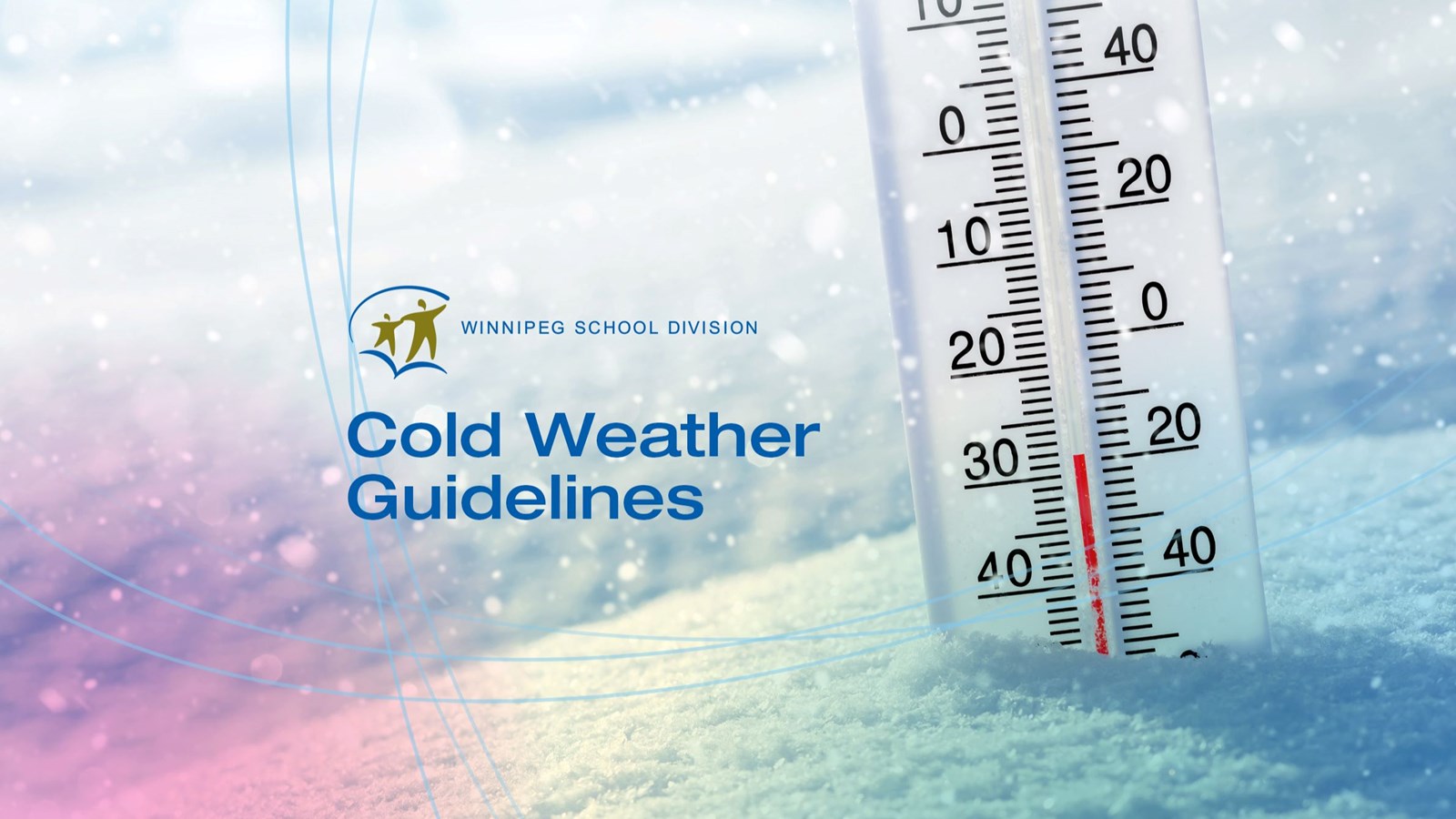Cold Weather Guidelines
January 16, 2024
Indoor Recess
Students stay indoors for recess when the wind chill reaches -28 degrees Celsius.
Bus cancellations
During the school year there may be times when school bus transportation is cancelled due to inclement weather or poor driving conditions, but schools will remain open.
School bus transportation for all school divisions in the City of Winnipeg is cancelled:
- A. If the actual temperature is -35°C (regardless of windchill) based on the 6:00 a.m. Environment Canada reading at the Forks, Winnipeg or;
- B. If the wind chill reaches -45°C (regardless of air temperature) based on the 6:00 a.m. Environment Canada readings at the Forks, Winnipeg.
The temperature and windchill readings can be found at the Environment Canada website (click here for latest readings at The Forks). When bus transportation is cancelled in the morning, it will not resume later in the day even if weather conditions improve.
All major Winnipeg media outlets are contacted in the early morning and are asked that they broadcast and/or post bus cancellation information.
Wind Chill Hazards and What To Do (Source Canada.ca) | |||
Wind Chill | Exposure Risk | Health Concerns | What to Do |
0 to -9 | Low Risk |
|
|
-10 to -27 | Moderate Risk |
|
|
-28 to -39 | High Risk: exposed skin can freeze in 10 to 30 minutes |
|
|
-40 to -47 | Very High risk: exposed skin can freeze in 5 to 10 minutes |
|
|
-48 to -54 | Severe risk: exposed skin can freeze in 2 to 5 minutes |
|
|
-55 and colder | Extreme risk: exposed skin can freeze in less than 2 minutes |
|
|
How to Estimate Wind Chill Values
- Estimate the wind speed outside by observing the movement of trees and flags, using the guide provided in the table below.
- Once you have estimated the wind speed and you know the temperature outside, you can estimate the wind chill by referring to the numerical chart below.
Wind Chill Index | ||||||||||||
Wind speed (km/h) | Estimating wind speed - what to look for | Temperature (°C) | ||||||||||
|
| 0 | - 5 | -10 | -15 | -20 | -25 | -30 | -35 | -40 | ||
10 | Wind felt on face - wind vane begins | -3 | - 9 | -15 | -21 | -27 | -33 | -39 | -45 | -51 | -57 | -63 |
20 | Small flags extended | -5 | -12 | -18 | -24 | -30 | -37 | -43 | -49 | -56 | -62 | -68 |
30 | Wind raises loose paper, large flags | -6 | -13 | -20 | -26 | -33 | -39 | -45 | -52 | -59 | -65 | -72 |
40 | Small trees begin to sway and large | -7 | -14 | -21 | -27 | -34 | -41 | -48 | -54 | -61 | -68 | -74 |
50 | Large branches of trees move, | -8 | -15 | -22 | -29 | -35 | -42 | -49 | -56 | -63 | -69 | -76 |
60 | Trees bend and walking against the | -9 | -16 | -23 | -30 | -36 | -43 | -50 | -57 | -64 | -71 | -78 |
Weather forecasts: Canada.ca/weather
Footnotes
In sustained winds over 50 km/h, frostbite can occur faster than indicated.
